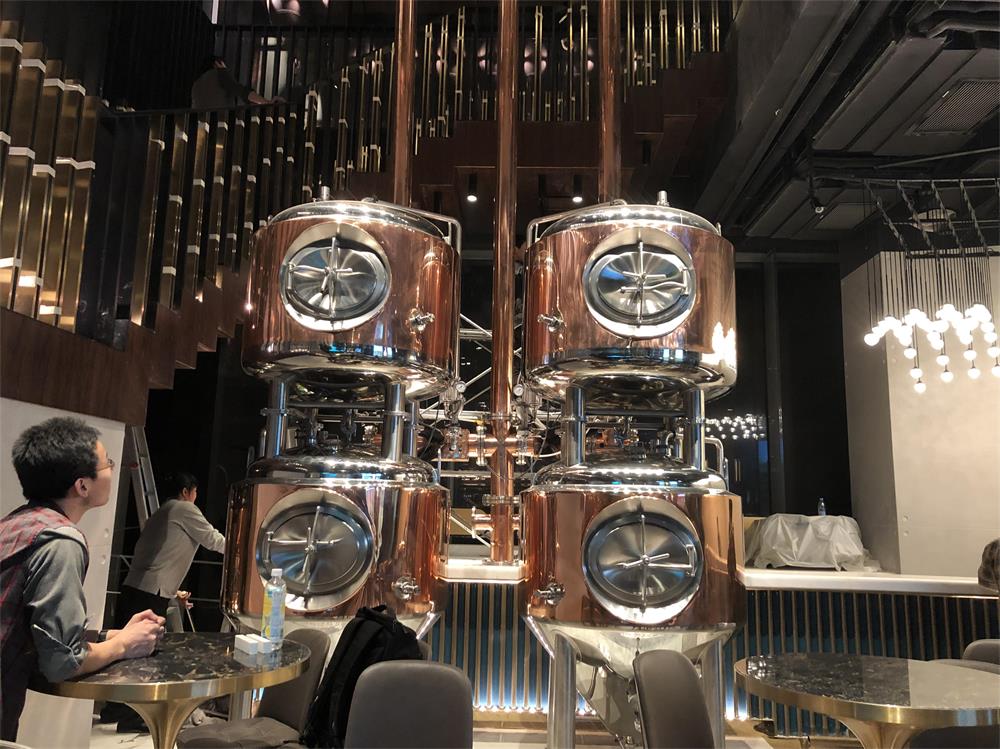Unlocking the Secrets of Home Brewing: The Ultimate 2 Vessel Brewing System Guide
Introduction
A 2 vessel brewing system is a versatile setup used in the process of brewing beer. It consists of two main components: the mash/lauter tun and the brew kettle. In this article, we will explore the various aspects of a 2 vessel brewing system, including its components, advantages, considerations for choosing one, the brewing process, cleaning and maintenance, troubleshooting common challenges, and more.
Components of a 2 Vessel Brewing System
Mash/Lauter Tun
The mash/lauter tun is a key component of the 2 vessel brewing system. It serves two main purposes: mashing and lautering. The tun is designed to hold the grain and hot water mixture during the mashing process. It features various design considerations, such as insulation, false bottom or manifold, and a sparging system. The mash process involves enzymatic reactions and starch conversion, while lautering involves separating the liquid wort from the spent grain.
Brew Kettle
The brew kettle is the second vessel in a 2 vessel brewing system. Its primary function is to boil the wort and facilitate hop additions. The brew kettle is designed to handle the boiling process and features considerations such as size, heating elements, and a whirlpool port. Boiling the wort sterilizes it, extracts hop flavors, and helps clarify the beer.
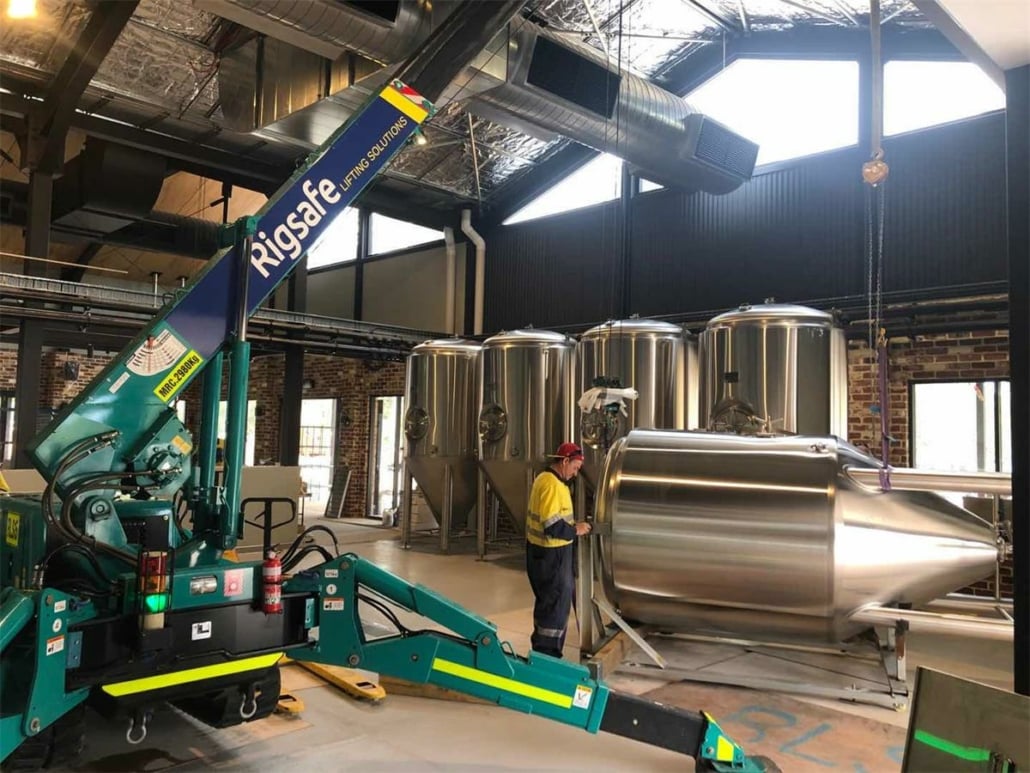
Advantages of a 2 Vessel Brewing System
Space Efficiency
One of the significant advantages of a 2 vessel brewing system is its space efficiency. Compared to larger multi-vessel systems, a 2 vessel setup requires less space. This makes it an ideal choice for homebrewers or breweries with limited space availability.
Cost Savings
Another advantage of a 2 vessel brewing system is cost savings. With only two vessels, the initial investment and ongoing maintenance costs are generally lower than systems with additional vessels. This affordability makes it an attractive option for those starting their brewing journey or on a tight budget.
Time Efficiency
A 2 vessel brewing system can also offer time efficiency benefits. The streamlined design allows for a more straightforward and efficient brewing process. With fewer vessels to manage, it reduces the overall brewing time and simplifies cleaning and maintenance.
Considerations When Choosing a 2 Vessel Brewing System
Batch Size
When choosing a 2 vessel brewing system, it’s essential to consider the desired batch size. Different systems have varying capacities, and selecting one that aligns with your brewing goals is crucial. Whether brewing small batches for personal consumption or larger quantities for commercial purposes, ensuring the system can accommodate the desired volume is essential.
Control and Automation
Control and automation features can greatly enhance the brewing experience. Some 2 vessel brewing systems offer advanced temperature control options, programmable timers, and automation for various stages of the brewing process. Considering the level of control and automation desired can help in selecting a system that aligns with specific brewing needs.
Material and Construction
The material and construction of the brewing system play a vital role in its durability and performance. Stainless steel is a common material choice due to its corrosion resistance and ease of cleaning. Assessing the quality of construction and the reputation of the manufacturer can ensure a reliable and long-lasting brewing system.
Budget
Budget considerations are crucial when selecting a brewing system. Determining the allocated budget helps narrow down the options and focus on systems that provide the best value within the available financial resources. It’s important to strike a balance between affordability and the desired features and quality.
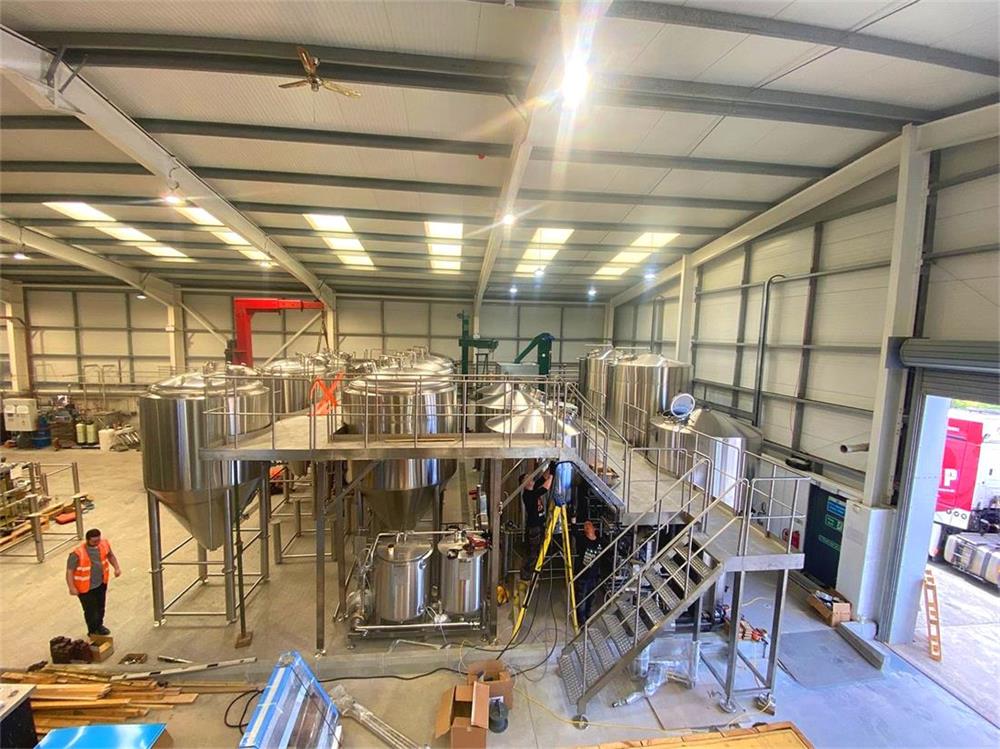
Step-by-Step Brewing Process Using a 2 Vessel Brewing System
Brewing with a 2 vessel system involves several steps that contribute to the creation of delicious beer. Here is a step-by-step overview of the brewing process using a 2 vessel system:
Mash-In
The brewing process begins by adding hot water to the mash/lauter tun. The crushed malt is then slowly introduced into the water while stirring to ensure even distribution. The mixture is allowed to rest for a specific duration to facilitate enzymatic reactions.
Mash Rest
During the mash rest, enzymes present in the malt convert starches into fermentable sugars. Different rest temperatures activate specific enzymes, influencing the beer’s characteristics. This step requires precise temperature control to achieve the desired results.
Lautering
After the mash rest, the liquid wort needs to be separated from the spent grain. Lautering involves slowly rinsing the grain bed with hot water to extract as much fermentable sugar as possible. The wort is collected in the brew kettle for further processing.
Boiling
Once the wort is collected in the brew kettle, it undergoes boiling. Boiling sterilizes the wort, deactivates enzymes, and extracts hop flavors. It is during this stage that various hop additions are made to contribute bitterness, aroma, and flavor to the beer.
Hop Additions
Hop additions during the boiling process vary depending on the beer style being brewed. Hops can be added at different times to achieve specific bitterness, flavor, and aroma profiles. Precise timing and calculations are crucial to achieving the desired results.
Cooling and Transfer
After the boiling and hop additions, the wort needs to be rapidly cooled to a temperature suitable for yeast pitching. This can be achieved through the use of a wort chiller or other cooling methods. Once the wort is cooled, it can be transferred to a fermentation vessel for the yeast to do its magic.
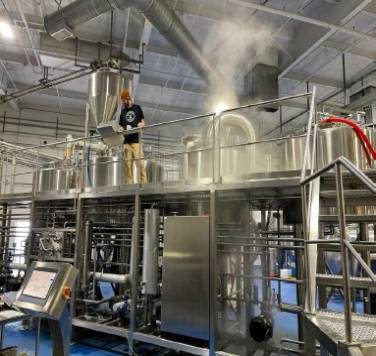
Cleaning and Maintenance of a 2 Vessel Brewing System
Maintaining a clean and well-maintained brewing system is essential for producing high-quality beer consistently. Here are some tips for cleaning and maintaining a 2 vessel brewing system:
Proper cleaning procedures
Regular cleaning after each batch is crucial to prevent contamination and off-flavors. Use a mild cleaning solution and thoroughly clean all components of the brewing system, including the mash/lauter tun, brew kettle, valves, and tubing. Pay special attention to removing any residue or buildup. Rinse everything thoroughly with clean water to ensure no cleaning agents are left behind.
Routine maintenance tips
Regular maintenance helps prolong the life of your 2 vessel brewing system and ensures optimal performance. Here are some routine maintenance tips:
- Check for any leaks or loose fittings before each use. Tighten any connections as needed.
- Inspect and clean the false bottom or manifold in the mash/lauter tun to prevent clogging and ensure efficient lautering.
- Regularly clean and inspect heating elements in the brew kettle to remove any mineral deposits or buildup.
- Replace worn or damaged gaskets, seals, or O-rings to maintain proper seals and prevent leaks.
- Periodically calibrate temperature probes or thermometers to ensure accurate temperature readings during the brewing process.
Common Challenges and Troubleshooting
Stuck Mash/Lauter
A stuck mash or lautering process can occur if the grain bed becomes compacted or if the flow is restricted. To troubleshoot this issue, try adjusting the flow rate, gently stirring the grain bed, or using rice hulls to improve flow and prevent clogging.
Caramelization and Scorching
Caramelization and scorching can happen when the wort or grain comes into direct contact with the heat source or when high heat is applied for an extended period. To avoid this, stir the wort continuously during boiling and adjust the heat to prevent excessive caramelization or scorching.
Temperature Control Issues
Maintaining precise temperature control during the brewing process is crucial for achieving desired results. If you’re experiencing temperature control issues, check the accuracy of your temperature probes or thermometers and make any necessary adjustments. Consider using insulation or a temperature control system to improve consistency.
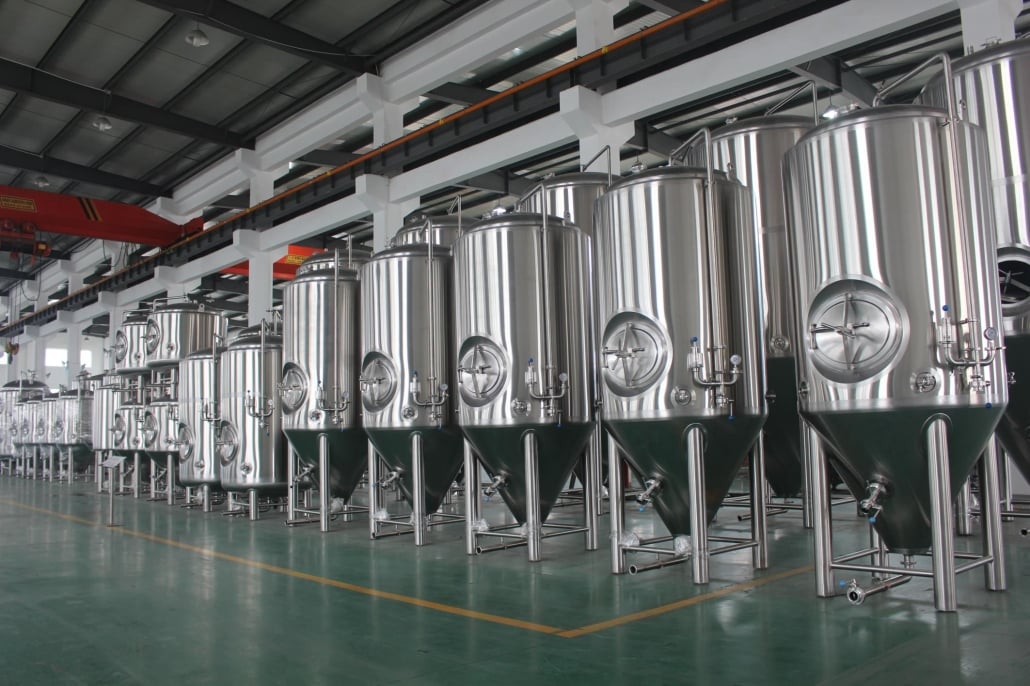
Conclusion
A 2 vessel brewing system offers a practical and efficient way to brew beer, whether you’re a homebrewer or a small-scale commercial brewery. With its space efficiency, cost savings, and time efficiency benefits, it’s a popular choice among beer enthusiasts. By understanding the components, advantages, considerations, brewing process, cleaning and maintenance, and troubleshooting techniques, you can confidently embark on your brewing journey with a 2 vessel system.
FAQs
FAQ 1: Can I brew different beer styles with a 2 vessel brewing system? Absolutely! A 2 vessel brewing system allows you to brew a wide variety of beer styles. By adjusting the recipe, hop additions, and fermentation conditions, you can create a diverse range of beers, from light lagers to hoppy IPAs and rich stouts.
FAQ 2: How much space do I need for a 2 vessel brewing system? The space required for a 2 vessel brewing system can vary depending on the specific model and configuration. However, compared to larger multi-vessel systems, a 2 vessel setup typically requires less space. As a rough estimate, allocate a workspace that can accommodate the dimensions of the mash/lauter tun and brew kettle, along with additional space for maneuvering and storage of brewing ingredients and equipment.
FAQ 3: Are 2 vessel brewing systems suitable for homebrewing? Yes, 2 vessel brewing systems are well-suited for homebrewing. They provide a compact and efficient setup that allows homebrewers to produce high-quality beer in smaller batches. With proper planning and organization, you can enjoy the brewing process and create delicious beer with a 2 vessel system in the comfort of your own home.
FAQ 4: What are some popular brands of 2 vessel brewing systems? There are several popular brands that offer reliable and high-quality 2 vessel brewing systems. Some well-known brands include SS Brewtech, Blichmann Engineering, Spike Brewing, and Ruby Street Brewing. It’s recommended to research and read reviews to find a system that best fits your brewing needs and budget.
FAQ 5: Can I upgrade a 2 vessel brewing system to a 3 vessel system in the future? Yes, it is possible to upgrade a 2 vessel brewing system to a 3 vessel system in the future if desired. Upgrading typically involves adding an additional vessel, such as a dedicated hot liquor tank or a separate mash tun and lauter tun. Consider factors such as space availability, budget, and brewing goals before deciding to upgrade your system.
Additional FAQs About 2 Vessel Brewing System Design and Use
1) What’s the most efficient heating option for a 2 Vessel Brewing System at home or nano scale?
- Electric elements are common for 5–10 gal home systems and many nanos due to clean install and precise control. Direct-fire works well where gas is cheap and ventilation is easy. Steam is ideal for repeatability at larger nano scales but adds boiler cost and compliance.
2) How do I minimize stuck sparges in a mash/lauter combo tun?
- Use a properly sized false bottom/manifold, maintain a moderate crush, add 3–5% rice hulls for husk-poor grists, recirculate gently to set the bed, and control differential pressure with a grant or VFD pump to avoid compaction.
3) Can a 2 vessel system support step mashing and decoction-like profiles?
- Yes. Step mashes are achievable via electric PID control or HERMS/RIMS loops. Decoction character can be approximated with higher mash rests and kettle caramelization, though true decoction requires pulling/boiling a portion of mash.
4) What KPIs should I track to improve consistency on a 2 vessel setup?
- Mash efficiency, pre-boil gravity, boil-off rate, knockout time, water use per batch, and cold-side DO at transfer. Logging these helps repeatability and cost control.
5) How scalable is a 2 vessel system for small commercial use?
- Many brewpubs run 2 vessel systems up to ~10 hL with 2–3 turns/day. Beyond that, lauter and whirlpool bottlenecks often justify adding a third vessel or upgrading to a dedicated whirlpool to increase throughput.
2025 Industry Trends for 2 Vessel Brewing Systems
- Smarter controls at small scale: Affordable PID controllers with app connectivity and data logging are standard on premium home/nano 2V systems.
- Water and energy optimization: Heat recovery plates and insulated lines reduce kWh/hL; recirculated rinse for CIP cuts water/chemicals.
- Oxygen control goes mainstream: CO2 purging routines and low-O2 transfer kits are widely offered, extending shelf life of hop-forward beers.
- Modular expansion paths: Many 2V systems ship with ports and piping stubs to add a whirlpool or HLT later without full re-plumb.
- Safety and compliance focus: More vendors support electrical certification, pressure ratings for fittings, and documentation for AHJ approvals.
2025 Data Snapshot: Adoption and Performance at 2V Scale
| Metric | 2022 | 2024 | 2025 (proj.) | Notes / Sources |
|---|---|---|---|---|
| Home/nano buyers choosing 2 Vessel Brewing System over 3V | 52% | 56% | 58–62% | Vendor surveys; trade press |
| 2V systems shipping with app/PID data logging | 35% | 47% | 55–60% | OEM catalogs |
| Inline or handheld DO used at cold-side transfer (nano) | 18% | 28% | 34–40% | QA vendor briefs; BA seminars |
| Typical water use ratio with basic heat recovery (hL/hL) | 6.2 | 5.7 | 5.3–5.5 | Energy/water audits |
| Avg. lead time for premium 2V nano systems (weeks) | 10–16 | 10–14 | 8–12 | Supplier reports |
Sources:
- Brewers Association Quality & Sustainability: https://www.brewersassociation.org
- Institute of Brewing & Distilling (IBD): https://ibd.org.uk
- ProBrewer vendor forums and audits: https://www.probrewer.com
- OEM/instrument technical notes on DO/CIP and heat recovery
Latest Research Cases
Case Study 1: Low-Oxygen Upgrades Extend Shelf Life on 2V Nano (2025)
Background: A 7 hL brewpub using a 2 Vessel Brewing System saw rapid hop aroma fade in packaged IPAs.
Solution: Added CO2 purging routines for lines/vessels, closed transfers with spunding-capable unitanks, and handheld DO checks at brite tank inlet; standardized whirlpool rest and reduced splashing.
Results: Package TPO reduced by ~25–35%; sensory panels reported improved hop freshness at 45 days; CO2 purchases fell ~20% due to spunding. Sources: Brewery QA logs; BA Quality session notes.
Case Study 2: Heat Recovery on 2V System Lowers Utilities (2024)
Background: A 10 hL 2V system faced high energy and long mash-in heat-up times.
Solution: Installed a wort-to-HLT plate heat exchanger for heat recovery, insulated hot lines, and implemented boil-off rate control via PID.
Results: Energy intensity fell 12–18% (kWh/hL); mash-in reached target faster by ~15–20 minutes; annual utility savings paid back capex in ~14 months. Sources: Energy audit; OEM application brief.
Expert Opinions
- John Mallett, Brewing Operations Expert; Author of “Malt: A Practical Guide”
Viewpoint: “On 2 vessel systems, precise temperature control and gentle wort handling matter more than extra vessels. Measure, calibrate, and your consistency will follow.” - Dr. Katherine C. Smart, Professor of Brewing Science; Former Global VP R&D, AB InBev
Viewpoint: “Validated cleaning (CIP) and oxygen management are non-negotiable for quality. Even small 2V setups benefit from verification—conductivity, temperature, and DO checks.” - Scott Janish, Brewer and Author of “The New IPA”
Viewpoint: “If hop expression is your goal, prioritize low-oxygen transfers and pressure-capable unitanks, regardless of whether you run 2V or 3V.”
Citations:
- Brewers Association Quality resources: https://www.brewersassociation.org
- IBD technical materials: https://ibd.org.uk
Practical Tools and Resources
- ProBrewer calculators and forums (2V workflow, lautering tips): https://www.probrewer.com
- G&D Chillers load calculator for nano sizing: https://gdchillers.com
- Anton Paar handheld DO/density tools: https://www.anton-paar.com
- CIP validation guidance (riboflavin test) and ASTM A967 passivation: https://www.astm.org/a0967_a0967m-17.html
- BA Sustainability benchmarking (energy/water KPIs): https://www.brewersassociation.org
Note: When sourcing a 2 Vessel Brewing System, request P&IDs, utility load sheets, control specs (PID accuracy, sensor types), oxygen control features (purge ports, sealed transfers), and CIP validation criteria. Confirm expansion options (future whirlpool/HLT) to protect your upgrade path.
Last updated: 2025-09-02
Changelog: Added 5 targeted FAQs, 2025 trend snapshot with data table, two nano-scale case studies, expert viewpoints, and vetted tools/resources aligned to 2 vessel systems.
Next review date & triggers: 2026-01-15 or earlier if BA/IBD issue new QA/CIP guidance, major OEM feature sets change, or energy/water benchmarks shift by >10%.
Share this entry
Interested in learning more about Brewing Systems including additional details and pricing information? Please use the form below to contact us!
YOLONG BREWERY EQUIPMENT FAQS
- Commercial Brewery / Craft Brewery / Microbrewery / Nanobrewery
- What is The Difference Between Craft Beer and Industrial Beer?
- The Bespoke Differences In Custom Brewing Systems
- Everything You Need to Know About Kettle Souring
- How to Choose Brewing Equipment for Your business?
- How To Choose The-Best Partner To Build Your Commercial Microbrewing System?
- Two Detection Sensors That You Need To Use In Your Brewhouse System
- Remote Control Applications in Brewing Equipment/How does it work?
- How To Clean Your Brand New Brewery Tanks?

